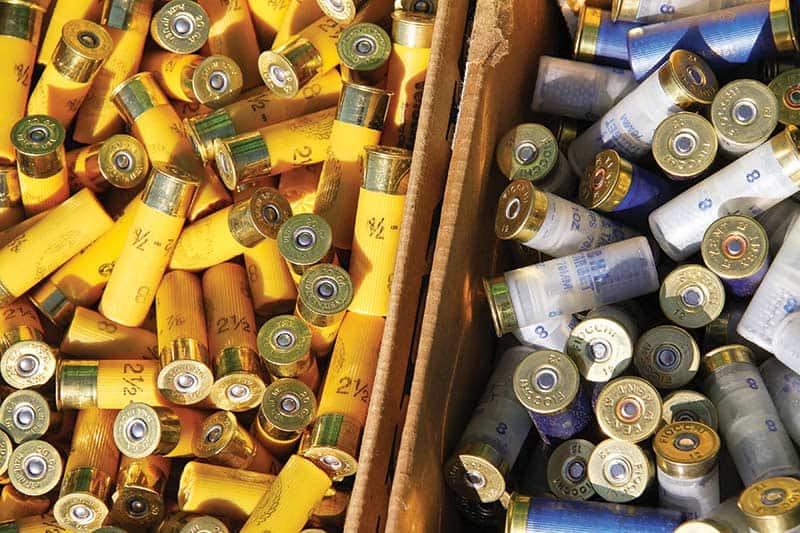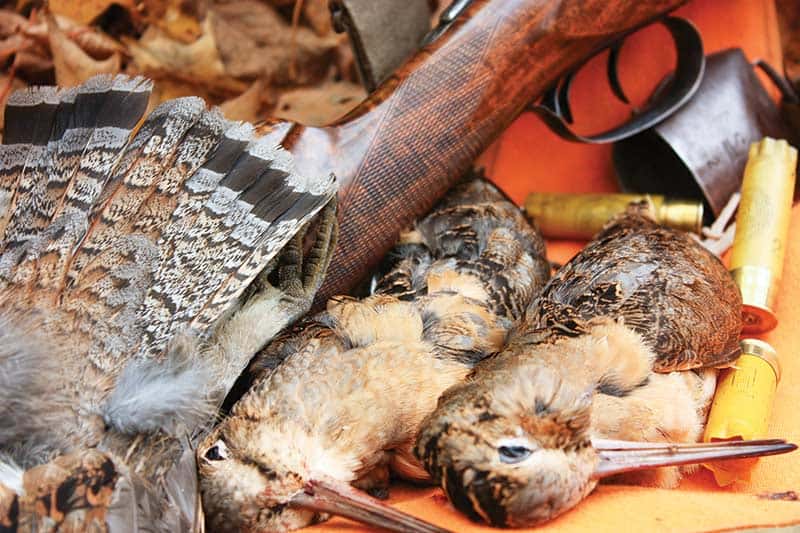Staggered Shells
The ‘changeup’ isn’t just for baseball
I sort of miss the old Poly-Chokes E.F. White developed in Hartford, Conn. in the 1920s. Poly-Chokes were a practical, dial-and-go way for shotgunners to change bore constriction. All it took was one turn of the dial and we could go from cylinder bore when hunting grouse and woodcock to a full choke for pass shooting geese.
No tools were necessary, but there was a catch — the beauty was certainly in the eye of the beholder. While the bulb on the muzzle was machined and functional, it surely wasn’t sleek. It seemed like folks either loved the practicality and dealt with the look, or they hated ’em and stayed far away. It turned out to be a passing trend for in the late 1950s, Winchester’s screw-in chokes were a follow-up design. Ever since, screw-in chokes have been an important way to hit more and miss less.
The Catch
There are far more upsides to changing bore constriction with either a Poly-Choke or a screw-in choke, but there is a downside. Shotgunners have to stop shooting and change their choke diameters. If you’re in the middle of a hunt and a flock of mallards are dumping into your spread or a covey of quail are erupting at your feet, you don’t have time to change chokes. There is a way to handle the situation — staggering your shells.
Although the flock of mallards and the covey of quail are different gamebirds, they do share one similarity. First shots on mallards are taken when their wings are cupped and the birds are dropping into the dekes. This first shot is close. After discharge, spooked birds beat feet to get away and the second shot is farther away. If you’re shooting a pump or a semi-automatic, the third shot is at an even greater distance. The same holds true for quail just as it does for a nye of pheasant. Changing chokes to accommodate those different distances would work but there is no time to do so. It makes as much sense as socks on a rooster.
You can solve the problem by staggering your shells. The concept is to shoot lighter loads offering better pattern spread at closer distances. A second shot is a moderate load designed for peak performance at a mid-range while the third shot should be of a heavy load.
Here’s one load-out example:
• A light 20-gauge load holds 3/4 oz. of shot.
• A standard 20-gauge load holds 7/8 oz. of shot.
• A heavy 20-gauge shell
holds 1 oz. of shot.
If you’re shooting a double, simply load your 3/4-oz. shell in either the right (SxS) barrel or in your bottom (O/U) barrel. The first shot is taken when the birds are close then load the 7/8-oz. shell in either the left (SxS) or the top (O/U) barrel; the second shot is taken when the birds are farther away.
This concept carries over to pump and semi-automatic irons, too:
• Light loads go first in the chamber.
• The heavy load is the first shell put in the magazine.
• The moderate load is added last.
This loading pattern gives a firing sequence with the pump or semi-automatic of the requisite light-moderate-heavy shells. The beauty of staggering shells is you can also change shot size to increase lethality. Smaller shot in close, larger shot at mid-range and the largest shot for the farthest distance. Use a patterning board to experiment with different brands and loads and you’ll find a winning combination.
Pellet performance
Upland game birds and waterfowl aren’t grizzly bear tough. A few pellets are all it takes to knock down a quail or grouse and several more for ducks and geese. Pattern spread is key to placing enough pellets for a lethal shot and staggering loads helps to achieve that goal.
But wait, there’s more — double-gun shooters have an additional advantage as they can shoot staggered shells in two different choke constrictions. If your first shot is on a mallard at 25 yards, you’ll get better pattern spread with a cylinder choke so use your right or bottom barrel. When the ducks are flying away, use the modified choke in your left or top barrel. Then, you’ll have chokes and loads giving the best possible spread at your distance.
Choke: Optimal pattern spread
Cylinder: A 40″ spread at about 25 yards
Improved Cylinder: A 40″ spread at about 30 yards
Modified: A 40″ spread at about 35 yards
Full: A 40″ spread at about 40 yards
The late outdoor writer Frank Woolner used a different technique to get a better pattern spread, but I wouldn’t recommend it — Woolner took a hacksaw to his Winchester Model 59 and knocked off about a foot of steel. I’d prefer a Poly-Choke, but more likely I’d spend a few off-season days simply staggering my shells.






